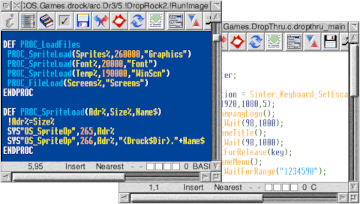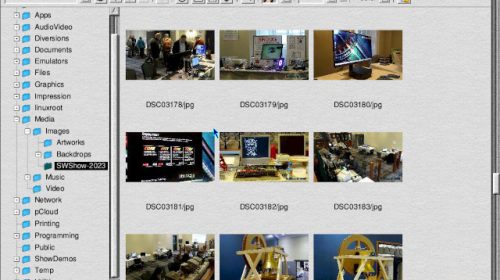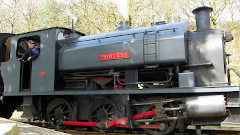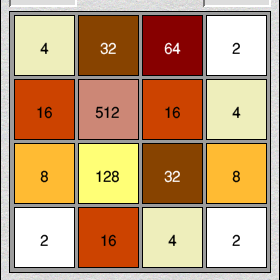The next so-called ‘fireside chats’ will take place on Saturday, 8th July. These online meetings, aimed at people who are (or would like to be) involved in RISC OS development – either of the OS itself, or of programs to run on it, are intended to be friendly discussions, about any and all areas related to writing software.
Read MoreCurrency 2.02 released
Kevin Wells has updated his application that allows RISC OS users to look up the currencies used by different countries, exchange rates between any two, and to convert between them, amongst a number of other options.
Read MoreUsing Windows and RISC OS together – WROCC meeting, 5th July
Last month’s Wakefield RISC OS Computer Club (WROCC) meeting saw Mark Stephens talk about how he uses RISC OS and MacOS side by side, and the benefits of being able to do so – as well as the problems that can frustrate the combination. This month the group is going to look at something very similar – this time the use of RISC OS in conjunction with Windows.
Read MoreMidlands Midsummer MUG Show morphs into MUG Mega Meeting
The time is nigh for the RISC OS world to gather around a single location once again, with the next main event scheduled for Saturday, 1st July. The event is the Midlands User Group‘s MUG Mega Meeting, and the location is in front of your own computer screen, wherever that may be!
Read MoreWROCC logo competition winner announced
Back in March Wakefield RISC OS Computer Club (WROCC) launched a competition to design a new logo – the old one having been used in one form or another for some thirty years.
Read MoreBe social with ROUGOL – 19th June
Taking a break from having formal speakers, the next RISC OS User Group of London (ROUGOL) meeting – which takes place on Monday – will simply be a social event, allowing people to get together for a bite to eat and a drink, and to discuss all things RISC OS.
Read MoreCLFiler 1.35 released
The RISC OS filer, a key part of the RISC OS desktop environment is clean and simple, and does its job superbly – even though we use it whenever we use the RISC OS computer, we probably don’t give it that much thought; it’s just there, showing us our files, and providing a target to drop new ones into.
Read MoreArriving now: TrainTimes 2.00
Kevin Wells has released a new version of TrainTimes his application that makes it easy to check train timetables from the RISC OS desktop. A need to change the third party Application Programmer Interface (API) provider – the web-based resource used by the software to look up the information requested by the user – prompted Kevin to rewrite the application itself, leading to version 2.00.
Read MoreCherry Bomb release, and Code the Classics update
Over the last couple of weeks, there have been a small handful of announcements arrive at the RISCOSitory bunker that I’ve been unable to deal with immediately, instead putting them on hold. As such you’ll see a small clutch of posts appearing shortly – and this one is actually a combination of two announcements, both from the same source and covering the same subject matter in two parts.
Read More12MinsTo9 – simple maths and sliding tiles
A very simple game that’s been around for about a decade is 2048, a sliding tile game in which the goal is to slide all of the numbered tiles in one of four directions, in order to cause collisions between two tiles bearing the same number, at which point they combine to become the total of the two.
Read More








